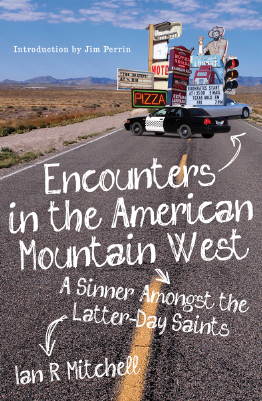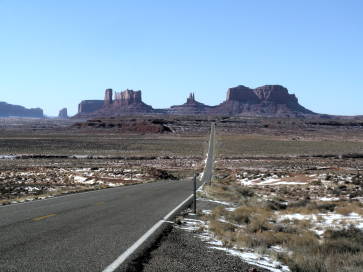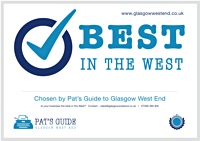On the Cowboy Trail
 from Encounters in the US Mountain West; A Sinner amongst the Latter Day Saints, by Ian R. Mitchell - to be published by NWP Publishing in September 2012. £14.99
from Encounters in the US Mountain West; A Sinner amongst the Latter Day Saints, by Ian R. Mitchell - to be published by NWP Publishing in September 2012. £14.99
The cowboy, and the outlaw with whom he is generally associated, assumes a large part in the American consciousness. Though the period of the "Wild West" was relatively short (from about 1865- 1895) it has nevertheless formed certain fixed iconic images in the mindset of the USA. The cowboy and the outlaw symbolise that anti-industrial romanticisation often attributed to people living outside, and to some extent against, the encroaching power of the modern state and capitalist economy. Somewhat paradoxically the state - represented by the lawman, and to a lesser extent the cavalry - stand for those who make things safe for women, kids and cherry pie, by going out and - quite simply, killing the bad guys. In High Noon the reluctant sheriff is forced to finally see that the only way to deal with outlaws, is to gun them down. (Even his more reluctant, pacifist, wife comes to this viewpoint, by shooting one of the baddies in the back.)
This resolution of social problems not by trying to understand and tackle them, but by going out with a gun and mowing down their social consequences, runs through the Western, the US detective novel, and the US war movie. It does not take a great stretch of the imagination to see US foreign policy as motivated by a similar mind-set, vide Bush Jr.'s "Dead or Alive" response to the 9/11 Twin Towers attack. Obama did more for his popularity than by any healthcare legislation he implemented, by assassinating Bin Laden in the best Western movie (it was even filmed) tradition to the joy of millions of Americans, who failed to share the rest of the world's realisation that this changed precisely nothing. The same millions of Americans believe that the right to carry arms (being your own cowboy) - which gives them a murder rate 10 times that of the UK - makes them safe against the bad guys.
 Utah is not really classical cowboy country. But not because its topography and climate are any less unsuited to cattle rearing than is the rest of the US West. The dry climate and thin soil with limited grazing makes the western US the worst possible place to raise cattle. In some parts of the South-West it takes 600 acres to graze a cow, whilst in the UK it is three (hence the term "three acres and a cow."). It beggars belief what you sometimes see the poor scrawny beasts grazing on, and a century and a half of this -thankfully declining- practise has been the biggest cause of habitat and species loss in the whole region. The buffalo is an example, possibly 100 millions of which were slaughtered in the 1870s to a great extent to make way for cattle (as well as to starve out the Indians). Utah is as unsuited to cattle as is Arizona, Nevada or Wyoming, which are prime beef-rearing areas. What was different was that the Mormons were not primarily cattle-raisers. Their tight-knit theocratic society would function best, its leaders like Brigham-Young realised, be more cohesive and easily controlled by the theocracy, if it were based on crop rearing in settled villages. The wide open life of the cowboy (and later the miner) was one that the Mormons eschewed, feeling that in such a context social order and religious control would be more difficult to establish. And they were right.
Utah is not really classical cowboy country. But not because its topography and climate are any less unsuited to cattle rearing than is the rest of the US West. The dry climate and thin soil with limited grazing makes the western US the worst possible place to raise cattle. In some parts of the South-West it takes 600 acres to graze a cow, whilst in the UK it is three (hence the term "three acres and a cow."). It beggars belief what you sometimes see the poor scrawny beasts grazing on, and a century and a half of this -thankfully declining- practise has been the biggest cause of habitat and species loss in the whole region. The buffalo is an example, possibly 100 millions of which were slaughtered in the 1870s to a great extent to make way for cattle (as well as to starve out the Indians). Utah is as unsuited to cattle as is Arizona, Nevada or Wyoming, which are prime beef-rearing areas. What was different was that the Mormons were not primarily cattle-raisers. Their tight-knit theocratic society would function best, its leaders like Brigham-Young realised, be more cohesive and easily controlled by the theocracy, if it were based on crop rearing in settled villages. The wide open life of the cowboy (and later the miner) was one that the Mormons eschewed, feeling that in such a context social order and religious control would be more difficult to establish. And they were right.
Nevertheless, in the more arid areas, away from the densely settled Mormon farming communities based on collective irrigation systems, ranching did develop, especially in southern Utah. And this area has a good claim to be the place which gave birth to the Western novel ( and subsequently to the whole genre of the Western film) with the appearance of Zane Grey's Riders of the Purple Sage in 1912 - a book which has never been out of print in 100 years and has been made into several films. As a work of literature the book is pretty awful, Grey was a Writer of the Purple Prose, but it is worth reading when in this part of the world for its social attitudes. It is interesting that the first proper detective novel (Conan Doyle's Study in Scarlet) is an anti-Mormon tract, and so too is the first real Western, for the target of Zane Grey's book is not the Indians, or Cowboys, but...the Mormons. In this book the good guys are the marginal cowboy types, and the bad guys the Mormon leaders trying to steal the hero Lassiter's intended woman for wicked polygamist purposes, as well as in order to get their hands on her farm.







